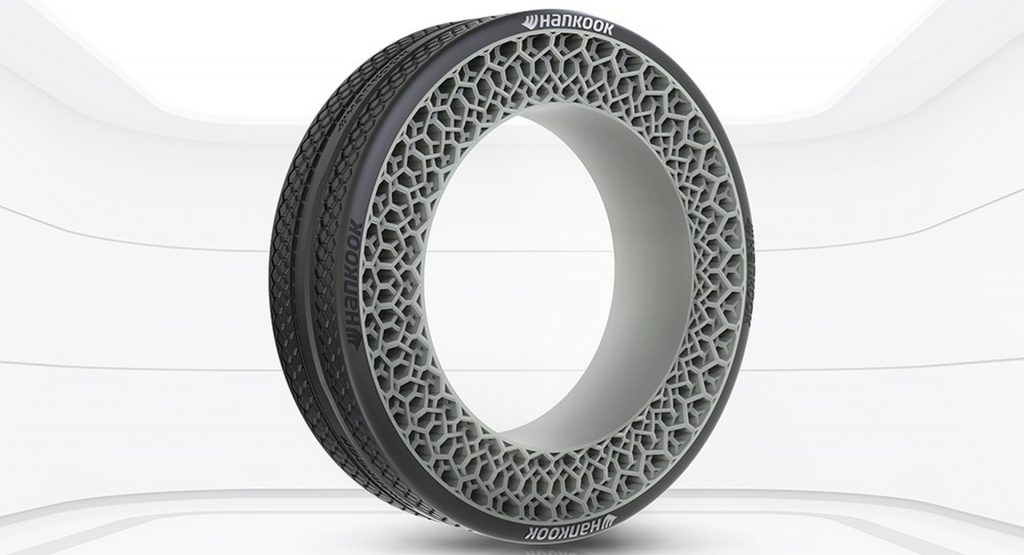Tire manufacturer Hankook has decided to wade into the world of airless tires and has shown off a prototype design at CES this year called i-Flex.
Developed through biomimetic studies and testing, the tire features a number of multi-layer interlocking spokes to keep it rigid enough to carry weight, while also being compliant enough to deform over bumps.
To do that, Hankook has looked to the structure of the cells of living organisms for inspiration. The threaded spoke structure that was developed allows the tire to handle movement in both directions, not just forward. That will be useful because Hankook has shown off its tire with Hyundai’s Plug & Drive (PnD) module.
Read Also: Hyundai Wants To Make Everything Mobile With Plug & Drive Platform
The module is designed to enable the Mobility of Things business model that Hyundai unveiled at CES this year.
“In the world to come, we will not move our things, but things will actually move around us with the PnD module making traditionally inanimate objects mobile,” said Dong Jin Hyun, the head of Hyundai Motor Group Robotics Lab. “We are directing all our ambitious robotics engineering and creative efforts towards realizing an even bigger vision than ever – the unlimited Mobility of Things ecosystem.”
As such, the tire that Hankook has developed is just 10 inches in size with a diameter of 400 mm (16 inches) and a width of 105 mm (4 inches). The airless tire is perfect for applications such as Hyundai’s PnD platform because owners don’t have to top up the air periodically.
That same quality of low maintenance makes airless tires perfect for autonomous vehicles and fleets, Hankook points out. There is also a safety advantage since there’s no risk of explosive decompression if a sharp object pierces the outer layer of the tire. Indeed, that may be why GM and Michelin are also interested in the technology.
Hankook says it has been looking at airless tires since 2010 and will continue its research and development to continue improving the technology.










